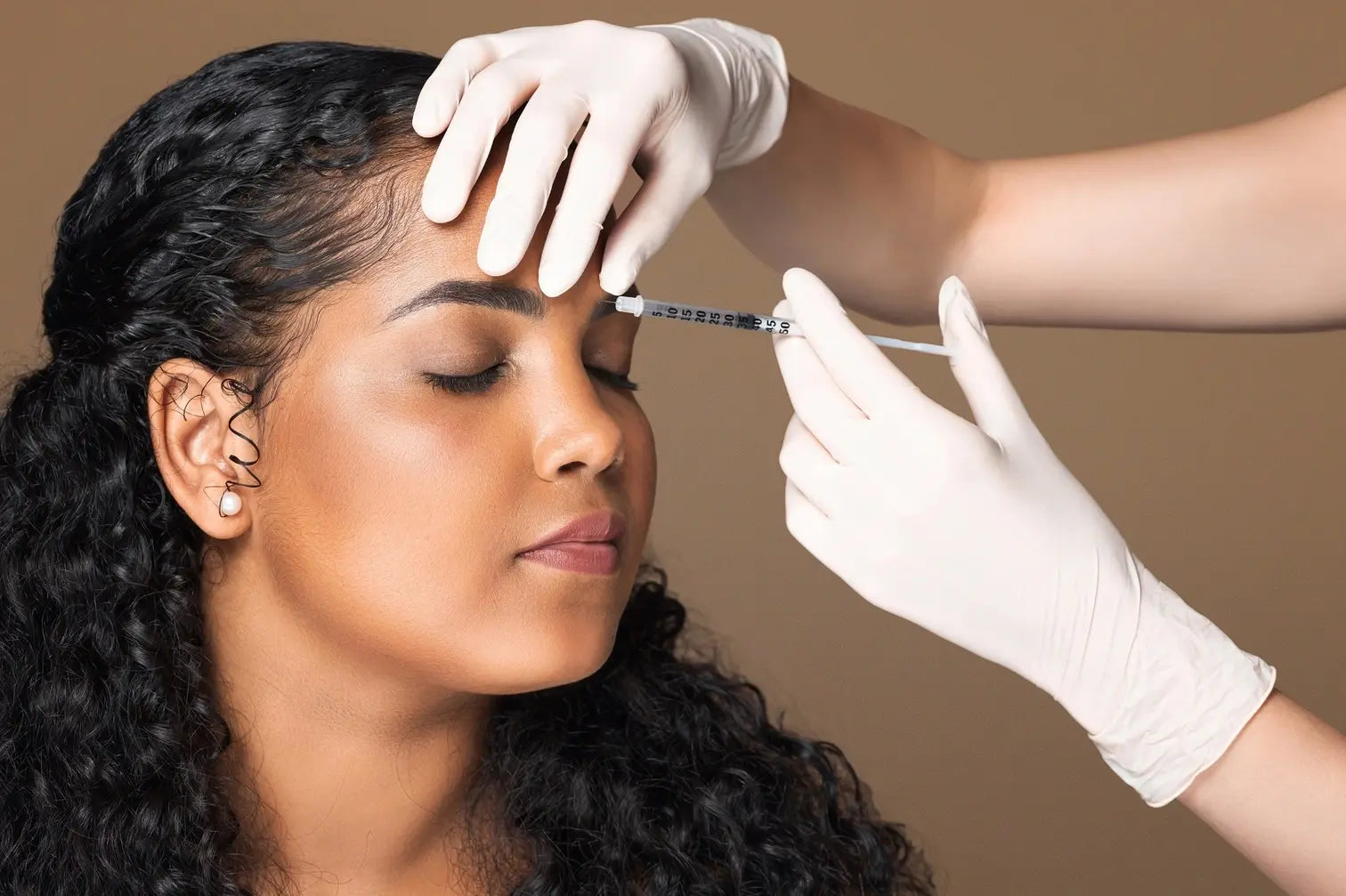Types of In-Office Skin Treatments
Botox
Botox, or botulinum, is one of the most common in-office cosmetic procedures. Instead of promoting new growth, botox paralyzes muscles beneath the skin, preventing movement along common crease lines, such as those on the forehead and around the mouth. By targeting these areas, Botox can significantly reduce the appearance of static wrinkles, offering a smoother, more youthful complexion. To maximize these benefits and ensure the best results, proper botox aftercare is essential.
Laser Therapy
Utilizing safe but powerful lasers, laser skin treatments offer a noninvasive treatment option to target various skin concerns, from sun damage and pigmentation issues to fine lines and acne scars. Laser therapy can rejuvenate the skin by stimulating collagen production and promoting cell turnover, resulting in a clearer, more radiant complexion.
Dermal Fillers
What are dermal fillers? Dermal fillers are injectable cosmetic treatments using hyaluronic acid gels to add volume, smooth out wrinkles, and promote natural collagen production. By targeting areas like the cheeks, lips, and nasolabial folds, dermal fillers can restore a youthful appearance and create a naturally refreshed look. Similarly to other facial treatments, don't forget proper post-filler care to ensure optimal results.3,4
Chemical Peels
You may be quick to compare the chemical peels you use at home to the in-office treatments, but in-office chemical peels are much stronger and can even be dangerous when performed outside of a doctor's office. While made of the same exfoliating acids, in-office chemical peels are meant for skin resurfacing, deeply exfoliating the skin, penetrating both the epidermis and dermis, removing dead skin cells, and stimulating new cell growth.5 Although these stronger chemical peels are great for evening skin tone and skin tightening, they come with much higher recovery times and should only be performed once or twice a year. Additionally, these skin treatments may come with the risk of uneven skin tone lightening, called hypopigmentation. If you want to start with something less invasive, there are plenty of non-surgical skin tightening options to consider
Microneedling
What does microneedling do? This skin procedure involves using a device with fine needles to create controlled micro-injuries on the skin's surface. When the skin's repair mechanisms rush to aid these micro-injuries, they trigger new collagen and elastin growth. Moreover, it improves the absorption and efficacy of topical skin care products used during or following the procedure in post-microneedling care. This makes it a minimally invasive yet powerful tool for reducing the appearance of wrinkles, fine lines, and acne scars.6
Microdermabrasioon
Using a handheld device, microdermabrasion gently exfoliates the outer layer of skin with abrasive crystals. This process removes dead skin cells and encourages circulation, promoting the growth of new, smoother, and more youthful skin. Because it exfoliates much more gently than other in-office skin care treatments, microdermabrasion requires next to no downtime and enhances the absorption of skin care products applied afterward.7
While most in-office treatments are safe, not all options will be the best for your skin's unique needs. Consult with your dermatologist to ensure your in-office treatment suits your skin type.

Post-Procedure Care
Proper post-procedure care is essential to ensure optimal results and minimize the risk of complications after in-office skin treatments. Here are some general suggestions, but follow your dermatologist's instructions carefully, as they may vary depending on your treatment.
Sun Protection
After some in-office skin treatments, your skin will be more sensitive to UV rays and heat, which can cause irritation or even degrade your treatment, neutralizing its effects. Avoid peak sunlight for the first few days to weeks and cover up with a 30+ SPF broad-spectrum mineral sunscreen with peptides like OS-01 FACE SPF or OS-01 BODY SPF while your skin heals.
Keep the Area Clean
One of the easiest ways for complications to form after an in-office treatment is for bacteria or other impurities to enter the body through a compromised skin barrier. Keep your skin safe by avoiding makeup immediately following your appointment and choosing non-comedogenic skincare options throughout the healing process. When you clean the skin, avoid any harsh scrubs, alcohol, or soaps that can further damage the skin barrier. We recommend using a gentle gel cleanser like PREP that can remove impurities without disrupting the skin barrier and even enhance the efficacy of your topical products .12
Hydrate the Skin
Keeping your skin hydrated is crucial for promoting healing and maintaining results after in-office treatments. Ensure you drink lots of water and electrolytes to keep your skin hydrated, which can help accelerate healing and enhance results after your procedure. Promote skin healing externally with a fragrance-free, gentle moiturizer safe for sensitive skin, like our OS-01 FACE peptide moisturizer, clinically proven to improve skin hydration and support the skin's microbiome.
Choosing the Right Skin Care Products
Powered by the OS-01 peptide, our daily moisturizers OS-01 BODY, OS-01 FACE, and OS-01 EYE are designed to complement and enhance the results of in-office treatments during the recovery process. Clinically validated to strengthen the skin barrier, boost hydration, and improve skin texture, our topical supplements provide the at-home care your skin craves in between appointments. (12)
- While at-home skincare routines are essential, they may not address all skin concerns effectively. In-office treatments offer more intensive solutions to boost collagen production and combat visible signs of aging skin.
- Common in-office treatments include Botox, laser therapy, dermal fillers, chemical peels, microneedling, and microdermabrasion.
- Post-treatment care is the key to getting the most from your treatments and minimizing discomfort during the recovery period.
- Not all treatments are suitable for every skin type. Consult with a dermatologist to choose the right treatment that fits your specific needs and skin condition.
- Based on data from clinical studies and/or lab studies conducted on human skin samples, models, and cells in the OneSkin lab. Explore more at oneskin.co/claims



